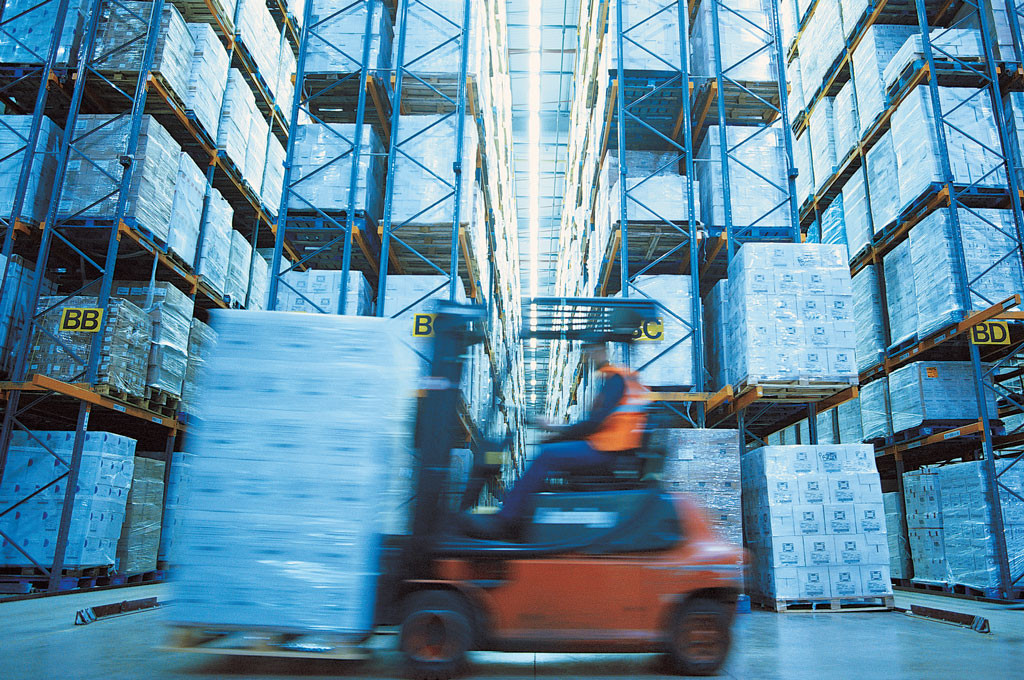Real-time forklift tracking in an age of IoT devices is becoming increasingly common in all sorts of environments, including warehouses, factories, ports, and logistics hubs. Historically, inventory has been tracked with simple RFID tags, requiring manual scanning, or more complex and cumbersome Bluetooth or “Active” RFID tags. Now, there are RTLSs (Real-time Location Systems) that can be set up with fewer sensors, higher accuracy, and a far greater number of benefits. Ours is called SmartSpace®.
Top 5 Forklift Monitoring System Use Cases
-
Monitor the whereabouts of all forklifts
Reducing search time
Across large sites, locating and deploying forklifts can become a time consuming exercise. Sometimes a forklift at the far side of a site will be in a position to pick up inventory before returning to its home station or loading bays, but the site manager is unable to predict its journey. An RTLS can help clarify where all forklifts are, allowing managers to stay put and monitor the site from a single location.
Gather data to optimize systems
Gathering data on a fleet’s whereabouts will allow site managers to develop insights into operational efficiency. By determining which forklifts are making wasted journeys, and where certain forklifts might be best positioned to access popular inventory, more ground can be covered with a smaller fleet.
-
Ensure correct inventory is located
Proximity triggers
By measuring the proximity of forklifts to certain stored items or their storage bays, a forklift monitoring system can ensure that the correct cargo is selected before the forklift continues to its destination.
Automatic logs
The RTLS can then automatically log the cargo as “in transit” before logging where the cargo is deposited. This eradicates the risk of inventory being lost, while also reducing the chances of inventory being stolen or misplaced due to negligence. These updates can be viewed in real time on a data visualization application.
-
Store data on maintenance/history
One of the benefits of tagging forklifts with a forklift monitoring system is the ability to store data. This can include their maintenance schedules, the age of the vehicles, manufacturer information, and even requirements for refueling. This can lead to automatic alerts being triggered when forklifts need attention, which reduces the need for periodic, scheduled maintenance.
-
Integrate with other aspects of RTLS
Many higher quality forklift tracking systems will integrate with other parts of a site-wide RTLS system. Perhaps a site also tracks the loading and unloading of trucks, and the trucks’ departure and arrival from the site. By coordinating these activities with the forklift tracking, one can ensure that inventory is moved about a site in the most efficient way possible. If a factory is producing products that need to be shifted into storage, the tracking system can alert forklift drivers to when they are required, or any sudden changes in schedule.
-
Safety
Speed limitation within certain zones
By setting up geofencing, one can create areas within a facility where speed limits are imposed on forklifts. Alerts can be triggered when forklifts are speeding in these areas, preventing accidents.
Only workers with correct fob/tag can operate
By tying the operation of forklifts to certain wearable tags, forklifts can either be shutdown or can trigger alerts when someone attempts to operate them without carrying the required tag.
Collision avoidance
When forklifts come into proximity of one another, collision prevention procedures can automatically be triggered. This is especially useful in busy sites with large fleets of forklifts.
Ubisense’s Unique SmartSpace® System
Ubisense’s SmartSpace® offers some unique features that many other forklift monitoring systems lack, even those using UWB (Ultra-wideband) technology.
- Ubisense’s UWB is best in class. It is perhaps the most accurate UWB RTLS system on the market and often tracks to centimeter level accuracy. This accuracy can make all the difference when tracking large amounts of inventory being deposited and collected from specific shelves/racks/floor space. It also prevents tags getting confused for one another.
- Smartspace® models environments in 3D, unlike many other UWB systems. This allows for height to also be taken into account – so one can ensure the correct inventory is collected and deposited in the most complex storage environments.
- We have flipped the script on forklift tracking. Through extensive experimentation, Ubisense has developed a system of flipping forklift tracking on its head, to reduce costs and provide the best tracking service possible. By adding sensors to the forklifts themselves and using tags across the facility in question, we can now reduce the number of sensors required for deployment.
- More reliable and more accurate sensors are allowing Ubisense to operate with fewer sensors then our rivals, helping to reduce costs and simplify installment, while also providing unparalleled reliability and data accuracy.
- The Smartspace® platform is tailored to you. We are able to build up a visual representation of your site and tailor your data visualization and automation experiences to your needs. We have worked in many forklift tracking environments, and we can ensure that your forklift tracking solution operates in the way that suits you.

